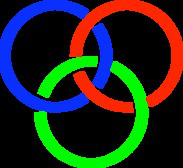Orateur
M.
Jean-Marc Richard
(IPNL)
Description
Exotic atoms were first studied as the strong interaction supplementing the Coulomb potential in atoms where an electron is replaced by a negatively-charged hadron. The energy shift is usually rather accurately described by a formula due to Deser et al. and Truemann, except in the situation where the hadronic scattering becomes very large.
The problem can be generalised to a variety of problems where a short-range potential is added to a long-range one. For a review, see, e.g., [1], with in particular a discussion about the phenomenon of level rearrangement which is observed when a zero-energy bound state occurs in the short-range part of the interaction.
Recently, the case of two space-dimensions has been studied [2]. The energy shift is given by a Deser–Truemann type of formula
δE=A/ln a/R (1)
where A is the square of the unperturbed wave function at the origin, and a the scattering length in the short-range potential.
The quantity R is more delicate: it is related to the derivative with respect to the energy of the coefficient of sqrt(r) in the solution of unperturbed radial equation that is regular at large distances. As seen in some examples, the energy shift given by this formula reproduces quite well the exact energy obtained from a numerical calculation and improves the result of ordinary perturbation theory.
References
[1] Monique Combescure, Avinash Khare, Ashok Raina, Jean-Marc Richard, Carole Weydert, “Level
Rearrangement in Exotic Atoms and Quantum Dots”,
Int. J. Mod. Phys. B, 21 (2007) 3765.
[2] Monique Combescure, Claude Fayard, Jean-Marc Richard, Avinash Khare, “Exotic atoms in two dimensions”,
J. Phy. A: Math. Gen., 44 (2011) A265302.
Author
M.
Jean-Marc Richard
(IPNL)

